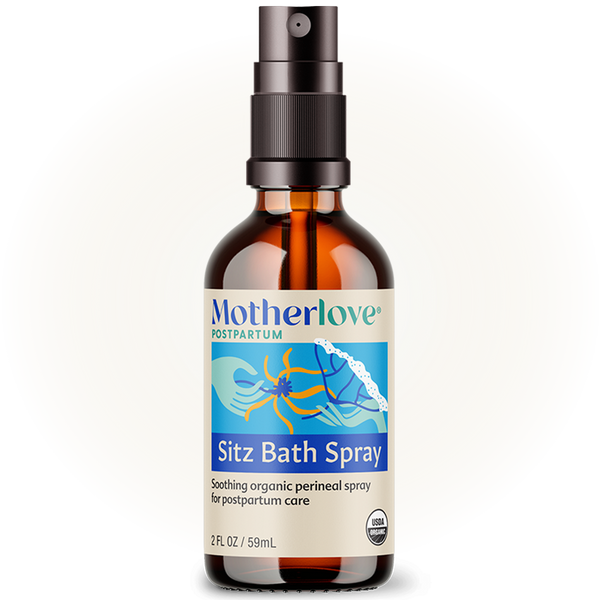By Anjelica, MSM, CPM, CLEC, LM.
As many of us know, birth never goes exactly as we expect. Whether it be due to unforeseen complications or simply a result of needing to flow with the events that unfolded, we gain valuable perspective with each birth experience we have. No matter what brought about your previous birth by cesarean section, or “belly birth” as many affectionately call it, I imagine that if you’re reading this it’s because you’re desiring to learn more about how to have a vaginal birth the next time around.
Depending on where you’ve looked or the standard among doctors and midwives in your community, you may have heard conflicting information about the option of a Trial of Labor after Cesarean (TOLAC) with the goal of a Vaginal Birth After Cesarean (VBAC). If this is true, don’t fret, I’m here to bring some clarity and guidance.
Here’s what you should know:
NO MORE DICTUM OF CRAGIN
Just because you’ve had a cesarean before, it doesn’t mean that every birth after that must also be a cesarean section. Health care professionals should no longer subscribe to the notion of “once a cesarean, always a cesarean”. This idea, also called Dictum of Cragin, was coined back in the early 1900s, and is based on outdated information (Foster, 2017). The American College of Obstetricians and Gynecologists recommends an individualized approach, with a conversation about each person’s risks and benefits (2019).
ACTUAL RISKS
The risk of uterine rupture, which is often cited as a reason to not offer a TOLAC, is low. About 98% of people won't have a uterine rupture, even after two prior cesareans (Metz, 2020). There are risks related to having a repeat cesarean section that women should be told of when discussing their preferred birth method. Those include, excessive bleeding, need for a blood transfusion, injury to other organs during the surgery, placenta accreta and previa in future pregnancies, and hysterectomy.
BOOSTING YOUR CHANCES
Certain things increase your chances of having a successful VBAC. Those are:
- Having had a previous vaginal birth
- Choosing a midwife as your provider
- Good nutrition and maintaining a healthy weight
- Preparing mentally and physically for labor, especially if you didn’t labor last time or have trauma from a previous birth
(Carroll, 2019; Dekker, 2021)
SOME EXPECTATIONS
There are few things that exclude you from trying for a vaginal birth after a previous cesarean section, those typically are (Metz, 2020):
- Having an inverted T, J-shaped, classical, or vertical scar
- Placenta previa or other placental issue, because this is also a general contraindication to vaginal birth all together
- History of a previous uterine rupture
Depending on whether or not you are working with a skilled breech provider, you may also be told that a breech baby is a contraindication to a TOLAC, but not all providers agree on this.
Some reasons you might be told you can’t have a VBAC, but should question are, having a higher BMI, a suspected large baby, being pregnant with twins, or going past your due date (ACOG, 2019).
THE BENEFITS
A completed vaginal birth after a cesarean birth is associated with increased exclusive breastfeeding rates, a more smooth recovery with less risk of wound infection, and less time spent in the hospital after birth (Dekker, 2021). Alone each of these benefits are worthwhile, but when considering how overwhelming the postpartum period can be with integrating a new member into the family, the added benefits of less complications and the ability to settle into your own home sooner are priceless.
GETTING SUPPORT
Oftentimes, the hardest part of having a VBAC is finding the right team to support you. If that’s true for you, there are resources out there to help you start the conversation with your doctor or midwife and build a supportive community for yourself as you pursue a TOLAC.
- International Cesarean Awareness Network (ICAN) Online - This is an online resource, membership community, and peer support hub for those interested in building understanding around cesarean birth rights, laws, and individuals' options. They also have in-person chapters around the country.
- VBAC Link - This community and resource site is led by doulas, which provide evidence-based information about VBAC.
- VBAC Facts - They offer courses and counseling for VBAC families.
- VBAC Homebirth Stories podcast - This doula-hosted series focuses on providing confidence to those interested in a Homebirth After Cesarean Section (HBAC).
- VBAC Birth Stories podcast - Here individuals share their unique experience with attempting a vaginal birth after cesarean section.
Remember that even with the very best planning birth cannot be fully controlled. Part of the journey of pregnancy and birth is helping to reveal to us the strength and power we have within ourselves no matter the hurdles that arise. The most important thing as you navigate this process of having a VBAC, is to find a provider you trust and build a team of like-minded people to help you toward the birth you desire. These should be those that will not only applaud you if the birth unfolds as you wish, but also be there to hold you if the birth does not.







